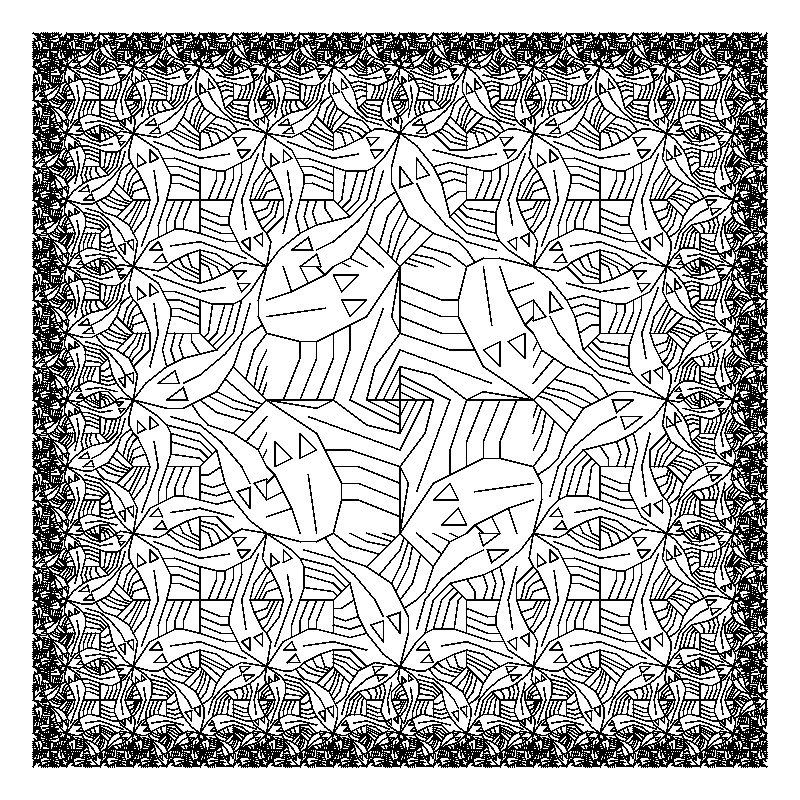Pictie is a simple, standalone C++ graphics package implementing an algebra of painters. It was created not to be a great graphics package but rather to be a test-bed for compiling C++ libraries to WebAssembly.
Run make -C tests check to build pictie "natively" and use it to
generate some test images. The reference outputs are checked into
revision control and can be viewed on
github.
It's easier than you might think!
This is probably not the easiest way to install Emscripten, but since Emscripten just switched to use LLVM's WebAssembly backend instead of its own, at least it is foolproof. See the upstream documentation for the official recommendations.
Download and build LLVM, enabling WebAssembly and the LLVM linker:
cd ~/src
git clone https://github.com/llvm/llvm-project.git
cd llvm-project
mkdir build
cd build
cmake -DLLVM_ENABLE_PROJECTS='lld;clang' -DLLVM_EXPERIMENTAL_TARGETS_TO_BUILD=WebAssembly -G "Unix Makefiles" ../llvm
make -j40
You might have to adjust the -j40 level. Also, the final linking
phase sometimes runs out of memory, so you might need to re-run the
make stage until it works.
Then download Emscripten:
cd ~/src
git clone https://github.com/emscripten-core/emscripten.git
Now Emscripten is mostly written in Python actually, so you don't need
to build it. Just run ~/src/emscripten/emcc and it will set itself up
for the first time, creating a file ~/.emscripten as it does so.
You need to edit that file to point it to your LLVM. Go into ~/.emscripten and
change the LLVM_ROOT line to read:
LLVM_ROOT = os.path.expanduser(os.getenv('LLVM', '~/src/llvm-project/build/bin'))
And at that point, you should be good to go.
If you installed emscripten as above, then to build WebAssembly files, just run:
make EMSCRIPTEN=~/src/emscripten
If you installed emscripten somewhere else, adjust EMSCRIPTEN
appropriately.
The result will be a pictie.js and pictie.wasm file in the local
directory.
The default optimization flags passed to Emscripten is -Oz, to
optimize for smallest code size. You can change these flags by setting
EMFLAGS, as in make EMSCRIPTEN=~/src/emscripten EMFLAGS='-Oz --closure 1'. (Setting --closure 1 enables the use of the Google
closure compiler on pictie.js, for better dead-code elimination and
minification.)
There is a pictie.html test harness in the root directory that
provides a kind of interactive graphics workbench, and which we use to
test out different modifications to the emscripten toolchain. This
requires that the web browser can be able to load pictie.js and
pictie.wasm from the same directory, which isn't always the case;
Chrome for example will refuse to do so. So, the solution there is that
emscripten packages a web server as well, which you can run via make run. As before, you might need to pass EMSCRIPTEN=~/src/emscripten
or something on the command-line.
But, maybe you just want to have a peek, so you can give it a go at https://people.igalia.com/awingo/pictie.html. No guarantees that this copy will be kept up to date though!
Pictie is inspired by Peter Henderson's "Functional Geometry" (1982, 2002). "Functional Geometry" inspired the Picture language from the well-known Structure and Interpretation of Computer Programs computer science textbook.
Pictie takes its functional geometry implementation from Michael Sperber and Jens Axel Søgaard's port of the picture language (source).
The simple rasterizing canvas implementation in Pictie was written from scratch for the project.
The pictie example code is available Emscripten's licensing terms, which is a permissive free software license. See the LICENSE file for full details.
